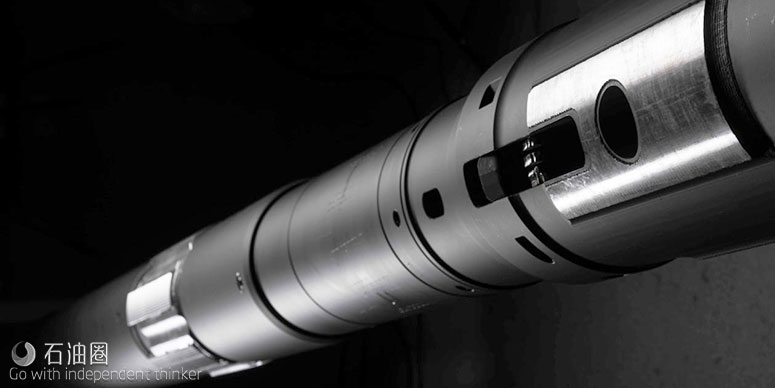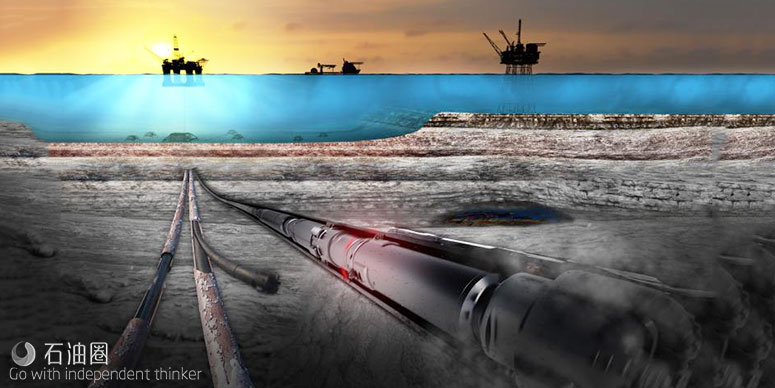Toolbox Offers New Technology For Casing Recovery Requirements
The introduction of pioneering directional drilling technology in the 1990s led to a boom in subsea wells. Now the industry faces a new frontier in the midto end-life requirements of those wells, and new downhole technology is emerging to optimize intervention and abandonment operations with benefits for complex and simple wells alike.
A key area where that new downhole technology is succeeding is in casing recovery, either as part of a slot recovery where the casing is removed to allow a new wellbore to be sidetracked from the same platform slot or as plug and abandonment where the well is to be either temporarily or permanently abandoned and casing needs to be recovered to place competent barriers in the well.
However, casing recovery can be extremely time-consuming, particularly for complex offshore wells where up to 70% of the rig time spent abandoning wells is incurred during the tripping and casing recovery phase of operations. It is precisely in these high-cost operations that time saving results in massive cost reductions.
The reason for this high cost is rooted in the single function technology—casing cutters and spears—that are conventionally used for cut-and-pull operations and the multiple trips in and out of hole required to accomplish sequential objectives using this singlefunction technology.
This multiple trip problem is compounded by the risk of an unsuccessful cut-and-pull attempt. Many factors can lead to the casing not coming free when pulled. Old cement, formation shift and casing degradation can play a part in making casing recovery an unpredictable operation. Ultimately, the pulling force required from topside equipment to recover a section of cut casing is unknown until an attempt is made to pull.
If insufficient pulling capacity is available and the attempt is unsuccessful, then the casing needs to be cut into smaller pieces, lowering the friction and mass of the fish. However, with conventional equipment this requires at least another two trips with cutter and spear, and in difficult wells the sequence of attempts and recuts can be repeated many times until the target string of casing has been recovered.
These issues and hours are further magnified in complex and subsea wells, which are those operations that are increasing in frequency, and where stuck casing is more likely and tripping depths are greater. Therefore, the demands for new casing recovery technology are twofold—to save time by combining sequential operations into a single trip as well as to offer smart, flexible functionality that allows an adaptive response to these unexpected wellbore challenges.
Designed for results
Ardyne’s Casing Recovery Toolbox includes two specialized cut-and-pull systems, the TRIDENT system and the TITAN system. Both systems begin with single-trip casing recovery and are differentiated by the additional functionality each brings to a slot recovery or plug and abandonment (P&A) operation, with each system optimized for different aspects of recovery.
The TRIDENT system is a rotarydriven, single-trip casing recovery system that incorporates several trip saving features including an integral tension-set packer for positive and negative pressure tests, and a hydraulically activated spear in conjunction with the ability to either run and set a bridge-plug or dress a cement plug prior to commencing the cutting and recovery of the target casing. TRIDENT has inbuilt additional features including cut indication capability, a swarf management system to avoid swarf entering sensitive well control equipment, a spear that sets in both 95⁄8-in. and 10¾-in. casing for tapered casing strings and a packer for annulus circulation around the cut casing.
The TITAN system unifies a downhole hydraulic power tool with single-trip casing cutting and recovery. The downhole adaptability of the TITAN system maximizes recoverable casing in challenging circumstances by increasing pulling capacity to 1.8 MMlb with the power tool and minimizing the risk of stuck fish by enabling repeatable, verified casing cutting in a single trip.
Repeatability is key
A single-trip cut and pull alone offers a step change in operational efficiency, but the TRIDENT and TITAN systems have been designed with additional functionality to avoid further planned trips and to allow the systems to adapt to unplanned downhole issues. Repeatability is key to this downhole adaptability. In scenarios where the casing is stuck, it is possible with both systems to reposition and make additional cuts without pulling out of hole to change bottomhole assemblies (BHA).
To enable these repeated cuts, the TRIDENT system is anchored when cutting casing, which centralizes the knives and increases stabilization during the cutting operation. This reduces vibrations in the drillstring, resulting in increased longevity and efficiency of the cutter knives that in turn enables repeatability in cutting operations.
Being anchored when cutting on a semisubmersible unit also eliminates the need for a marine swivel as the cutter is anchored in the same location throughout the cutting operation. The rig compensator takes up most of the heave, but any remaining drillstring movement is taken up by the TRIDENT anchor, ensuring that the cutter is held at correct depth for the completion of the cut.
Pressure rated to 3,000 psi, the TRIDENT system is ideal for most applications where a pressure test is required in a slot recovery or P&A application (e.g., testing the cement plug). The element can hold the differential pressure from either side of the element, thus enabling it to be used for positive and negative pressure testing.
The TRIDENT packer also can be set downhole once the casing cut is completed and an attempt can be made to circulate through the outer annulus to ensure that any shallow gas trapped below the seal assembly and wellhead, or any other annular gas, is circulated out prior to recovering casing. With the TRIDENT anchor set and the annulus cleaned, it is also possible to attempt to lift the casing to verify that it is free while still having the BHA at cutting depth.
Improving efficiencies
The technological improvement offered by the TRIDENT and TITAN systems has justifi ed several operators moving to treat casing recovery as a niche, value adding service. Following rigorous North Sea field testing in summer 2017 through the end of the year, Ardyne’s single-trip cutand- pull systems amassed in excess of 30 runs, with many more planned in 2018.
In a recent P&A operation, Ardyne’s Casing Recovery Toolbox was mobilized for a North Sea P&A operation, where planned operations included cutting and recovering 95⁄8-in. and 133⁄8-in. casing. By combining trips and through adaptable, repeatable downhole technology, the toolbox saved more than one day of rig time on an operation, which would conventionally have taken 3.5 days, and improved effi ciencies by 35%. Despite a focus for 2018 on commercializing its fi eldtested single-trip cut-and-pull systems on a global basis, Ardyne continues to add to the Casing Recovery Toolbox, with new technology and methods in the pipeline including vibration-assisted cut and pull, cement-through capability and a casing punch.

 石油圈
石油圈

